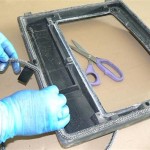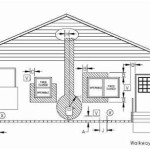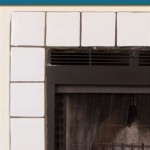Gas Fireplace Or Wood Burning: A Comprehensive Comparison
The decision to install a fireplace in a home often involves choosing between gas and wood-burning models. Both options offer distinct advantages and disadvantages, encompassing factors such as cost, environmental impact, convenience, and aesthetics. A comprehensive evaluation of these elements is crucial for homeowners to make an informed decision that aligns with their individual needs and preferences.
The historical prevalence of wood-burning fireplaces stems from their traditional role as a primary heating source. Historically, wood was a readily available and relatively inexpensive fuel, making wood-burning fireplaces a practical solution for warmth. However, modern advancements in heating technology and growing environmental concerns have prompted a reevaluation of wood-burning fireplaces, leading to the increased popularity of gas fireplaces as a more efficient and cleaner alternative.
Gas fireplaces operate by burning natural gas or propane to generate heat. These fireplaces are typically equipped with ceramic logs or other decorative elements to mimic the appearance of a traditional wood fire. The combustion process is controlled by a valve system, allowing for convenient on/off operation and adjustable heat output. Wood-burning fireplaces, on the other hand, require the manual loading and burning of wood, necessitating more hands-on involvement and potentially resulting in greater variability in heat output.
Initial Costs and Installation
The initial cost of purchasing and installing a gas fireplace can vary significantly depending on the model, size, and features. Generally, gas fireplaces are more expensive upfront than traditional wood-burning options. The installation process for gas fireplaces often involves running a gas line to the fireplace location, which can add to the overall expense. Venting requirements also contribute to the initial cost, as gas fireplaces typically require either a direct vent or a B-vent system to safely exhaust combustion byproducts.
Wood-burning fireplaces, while potentially less expensive in terms of the fireplace unit itself, can also incur significant installation costs. The construction of a chimney is often necessary, which can be a major undertaking, especially in existing homes without pre-existing chimney structures. Furthermore, compliance with local building codes and safety regulations can add to the overall expenses associated with wood-burning fireplace installation.
Beyond the initial installation, ongoing costs associated with each type of fireplace differ considerably. Gas fireplaces require a consistent supply of natural gas or propane, the cost of which fluctuates based on market conditions and geographic location. Wood-burning fireplaces require a continuous supply of firewood, which must be either purchased or harvested. The cost of firewood varies depending on the type of wood, the quantity purchased, and the region.
Environmental Impact and Emissions
Environmental concerns play a significant role in the decision-making process for many homeowners. Wood-burning fireplaces are known to contribute to air pollution through the emission of particulate matter, carbon monoxide, and other harmful pollutants. These emissions can negatively impact air quality, particularly in densely populated areas or during periods of atmospheric inversion. The burning of wood also releases carbon dioxide, a greenhouse gas that contributes to climate change.
Gas fireplaces generally produce fewer emissions than wood-burning fireplaces. Natural gas and propane burn more cleanly than wood, resulting in lower levels of particulate matter and carbon monoxide emissions. However, the combustion of natural gas and propane still releases carbon dioxide, albeit at a lower rate compared to wood burning. Additionally, the extraction and transportation of natural gas and propane can have environmental consequences, including methane leaks, which are a potent greenhouse gas.
Modern wood-burning stoves and fireplaces are designed with improved combustion technology to reduce emissions. These units often incorporate features such as catalytic converters and secondary combustion chambers to promote more complete burning of wood and minimize the release of pollutants. However, even with these advancements, wood-burning fireplaces generally have a higher environmental impact than gas fireplaces.
Convenience and Maintenance
Gas fireplaces offer a higher degree of convenience compared to wood-burning fireplaces. With the flip of a switch or the press of a button, a gas fireplace can be ignited and extinguished, providing instant heat and eliminating the need for manual tending. Temperature control is also easier with gas fireplaces, as the flame height and heat output can be adjusted with precision. The absence of ash and soot also simplifies the cleaning process, reducing the overall maintenance requirements.
Wood-burning fireplaces require more hands-on involvement and attention. The process of gathering, storing, and loading firewood can be time-consuming and physically demanding. Starting a wood fire can also be challenging, requiring skill and patience. Once the fire is lit, it must be monitored and tended to ensure proper burning. After each use, the ash must be removed and disposed of, and the chimney must be periodically cleaned to prevent creosote buildup, which can pose a fire hazard.
Regular maintenance is essential for both gas and wood-burning fireplaces to ensure safe and efficient operation. Gas fireplaces should be inspected annually by a qualified technician to check for gas leaks, proper ventilation, and component wear. Wood-burning fireplaces require regular chimney inspections and cleaning to remove creosote and other debris. Failure to properly maintain either type of fireplace can result in safety hazards and decreased performance.
The aesthetic appeal of a fireplace is a significant consideration for many homeowners. Wood-burning fireplaces offer a traditional, rustic charm that is often associated with cozy and inviting living spaces. The crackling sound and flickering flames of a wood fire can create a unique ambiance that is difficult to replicate with gas fireplaces. However, gas fireplaces have made significant advancements in replicating the look and feel of a real wood fire.
Gas fireplaces are available in a wide range of styles and designs, from traditional to contemporary, allowing homeowners to choose a model that complements their home décor. Ceramic logs are often used to create a realistic appearance, and some gas fireplaces even feature adjustable flame patterns and ember beds to enhance the visual appeal. The ability to customize the appearance of a gas fireplace makes it a versatile option for various interior design styles.
The ambiance created by a fireplace can contribute significantly to the overall comfort and enjoyment of a home. Whether it's the crackling sound of a wood fire or the steady glow of a gas flame, a fireplace can create a focal point and a sense of warmth and relaxation. The choice between gas and wood-burning fireplaces ultimately depends on the individual preferences and priorities of the homeowner.
Building codes and regulations often dictate the types of fireplaces that are permitted in certain areas. Some municipalities may restrict or prohibit the installation of wood-burning fireplaces due to air quality concerns. Gas fireplaces are generally allowed in most areas, but specific venting requirements and installation codes may apply. It is important to consult with local building officials and code enforcement agencies to ensure compliance with all applicable regulations.
Homeowner's insurance policies may also be affected by the type of fireplace installed. Wood-burning fireplaces can pose a higher risk of fire and smoke damage, which may result in higher insurance premiums. Gas fireplaces are generally considered to be safer and may result in lower insurance costs. It is advisable to contact an insurance provider to discuss the potential impact of fireplace installation on insurance coverage and premiums.
The long-term durability and lifespan of gas and wood-burning fireplaces are important factors to consider. Gas fireplaces typically have a longer lifespan than wood-burning fireplaces, as the components are less susceptible to wear and tear. Wood-burning fireplaces can experience corrosion and damage from heat and moisture, which can shorten their lifespan. Regular maintenance and proper care can extend the lifespan of both types of fireplaces, but gas fireplaces generally require less maintenance and are more durable over time.
Resale Value and Home Appraisal
The presence of a fireplace can enhance the resale value of a home. Both gas and wood-burning fireplaces can be attractive features for potential buyers, but the type of fireplace may influence its impact on the home's appraisal value. Gas fireplaces are often seen as a more modern and convenient amenity, which can appeal to a wider range of buyers. Wood-burning fireplaces may be particularly appealing to buyers who appreciate traditional aesthetics and the ambiance of a real wood fire.
Real estate agents and appraisers can provide valuable insights into the local market preferences and the potential impact of different types of fireplaces on home value. It is important to consider the overall features and amenities of the home when assessing the value of a fireplace. A well-maintained and properly functioning fireplace can be a significant selling point, regardless of whether it is a gas or wood-burning model.
When renovating or upgrading an existing fireplace, it is important to consider the potential return on investment. Upgrading to a more efficient gas fireplace or installing a modern wood-burning stove with improved emissions control can enhance the value and appeal of the home. Choosing a fireplace that aligns with the style and character of the home is also crucial for maximizing its impact on resale value.

Gas Stoves Vs Wood Burners The Fireplace Studio

Gas Stoves Vs Wood Burners The Fireplace Studio

Gas Burning Fireplace Vs Wood For You

Gas Vs Wood Fireplaces A Guide Chimney Com

Choosing Between Gas Fireplaces Wood

Gas Firepace Vs Wood Fireplace Why Is The Best Choice Draft Control Heating Cooling
Gas Wood Pellet Electric Which Fireplace Or Stove Is Right For You Marshall S Inc

The Top 3 Reasons To Choose A Gas Insert Over Log Set Hearthside Hearth Blog

Can A Wood Burning Fireplace Be Converted To Gas The Flame Company

Gas Logs Vs Wood Burning Fireplaces Dc Area Fireplace Service
Related Posts








